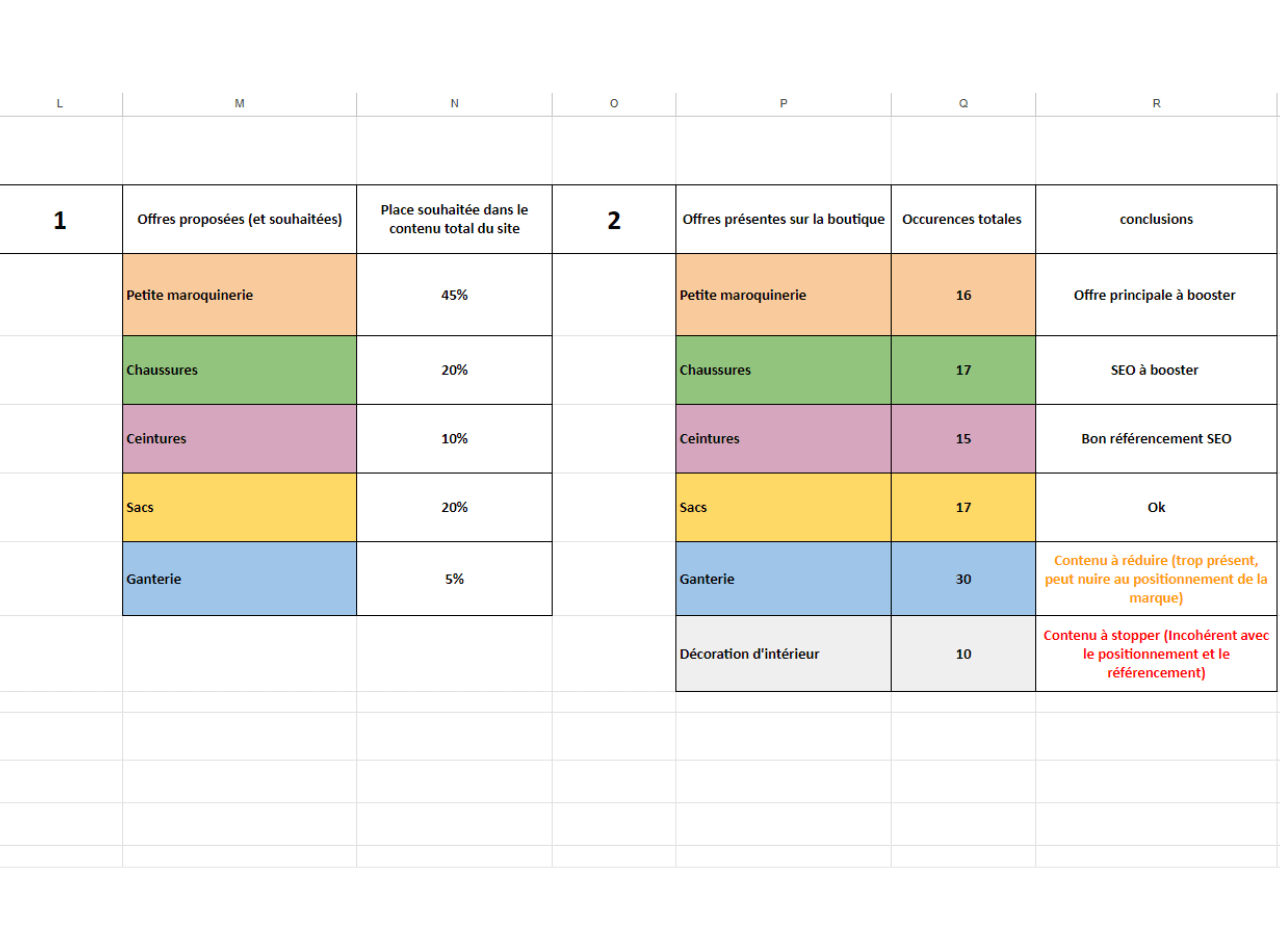When you decide to launch an e-commerce store, the question “What do I sell?” may seem obvious.
After all, it’s something you’ve thought through beforehand, and the resulting store is a 100% reflection of what you’re offering potential customers.
But after a while, some of the store’s content can start to diverge from the main offer: products, services, blog posts, links etc. can confuse visitors as to what the site is really about.
That’s why it’s a good idea, from time to time, to take a step back from your offerings by carrying out a “content audit”.
Let’s take a look at how to carry out a content audit for your e-commerce site. 
Why bother with a content audit?
This practice may seem technical at first, but it’s simply a matter of “scanning” the various contents of your website, taking care to check that they match the offer and spirit you had in mind at the outset.
The benefits of such a practice are manifold.
Restructuring your brand identity
If you’ve imagined and designed a boutique around leather goods, it’s to sell leather goods and be known for it, so if you start marketing and selling interior design, the “leather goods” identity you’ve created is bound to be impacted and lose visitors (or even give them the impression of an “all-purpose” site).
The first benefit of a content audit is therefore to clean up your content and keep only what is relevant to your original brand identity.
By doing so, the visitor arriving on the site will immediately understand what it’s all about and perceive the offers in a more positive light.
Focus on coherent offers and content
This aspect of the content audit, which prevents an e-commerce store (or any other website) from spreading itself too thinly, has an obvious benefit: it greatly improves the user experience and, a fortiori, the store’s SEO.
More coherent offers and content offer a double Kiss Cool effect: on the one hand, they make it easier for visitors to progress through the site; on the other, they favor keywords and structure that improve SEO.
Whether in terms of user experience or search engine queries, a well-executed content audit will inevitably optimize the site’s SEO as well as the quality of the prospects who visit it, as it will enable us to focus on certain precise themes and propose offers that correspond to them.
So, while the benefits are understandable, how do you go about carrying out a content audit for your e-commerce site?
There are a number of different methods, but the main framework remains the same.
The content audit: how to go about it?
The form of the content audit will depend on the format of the site and the offers it contains (store or blog, products or services…), but in all cases it’s best to start with an Excel spreadsheet.
Preliminary listing
The first step is to note the main themes (and any sub-themes) covered by the website in an Excel spreadsheet.
To take the previous example, the main theme would be leather goods, while the sub-categories could be handbags, belts or wallets, for example.
The next step is to note the offers related to these themes: do you want to sell bags?
belts?
etc., and in what proportions.
The idea here is to list the components of the website as you originally imagined them.
In a second table, we now need to identify the actual themes and sub-themes, and link them to the offers (and/or content) as they are presented on the website: how many of them are there, and especially how many different ones?
Then it’s time to compare theory and reality.
Analyze the results obtained

To do this, you need to check which themes and sub-themes are over- or under-represented compared to the desired proportions in the first table, but also whether there are any themes that weren’t intended from the outset, and which are therefore detrimental to the site’s coherence and SEO.
Next come the offers: are those we want to prioritize given sufficient prominence?
Are they relevant to the site’s themes?
Are there any “off-topic” offers?
What about their referencing?
Can it be improved, or should the offer be given greater prominence because it’s well referenced?
(In addition to the audit, it’s a good idea to carry out an SEO analysis with tools like Semrush or Screaming Frog, to get an even clearer picture of the state of your SEO).
Space should be set aside on the spreadsheet to record the conclusions necessary to “clean up” the site or online store.
The content audit, or how to give your offers a good clean-up.
A content audit allows you to clean up your content and keep only what’s relevant.
It improves user experience and SEO, while providing a salutary perspective on the real state of your website or e-commerce store.
It offers a simple and effective way of checking whether content is relevant to an offer, to the brand’s universe, etc. And above all, whether our positioning and content are in line with our brand.
And above all, whether our positioning and SEO are going in the right direction to bring us qualified prospects.
For all these reasons, it’s important to know how to carry out a content audit for your e-commerce site… and to do it regularly!
As an expert in the creation and management of e-commerce stores for the past 15 years, I can help you optimize your own store by carrying out a diagnosis of your offers and brand identity.
Please don’t hesitate to contact me.


